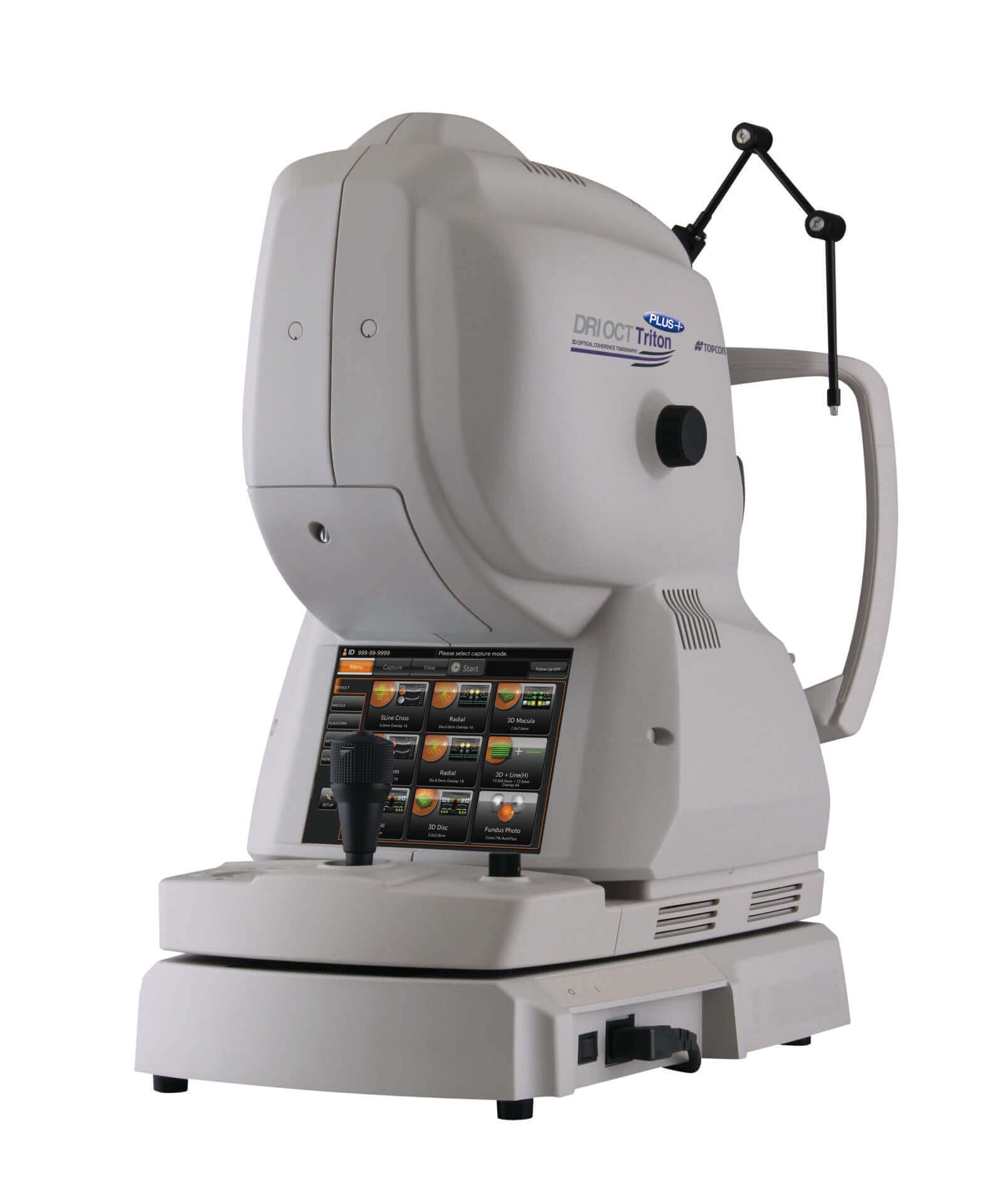
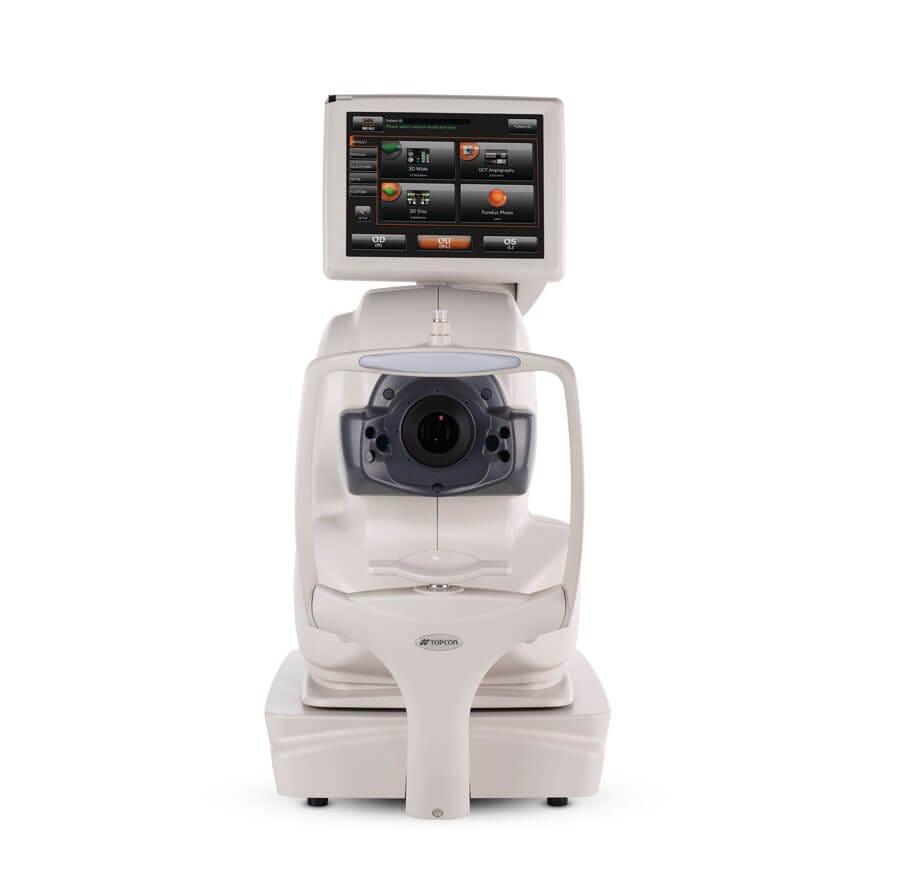
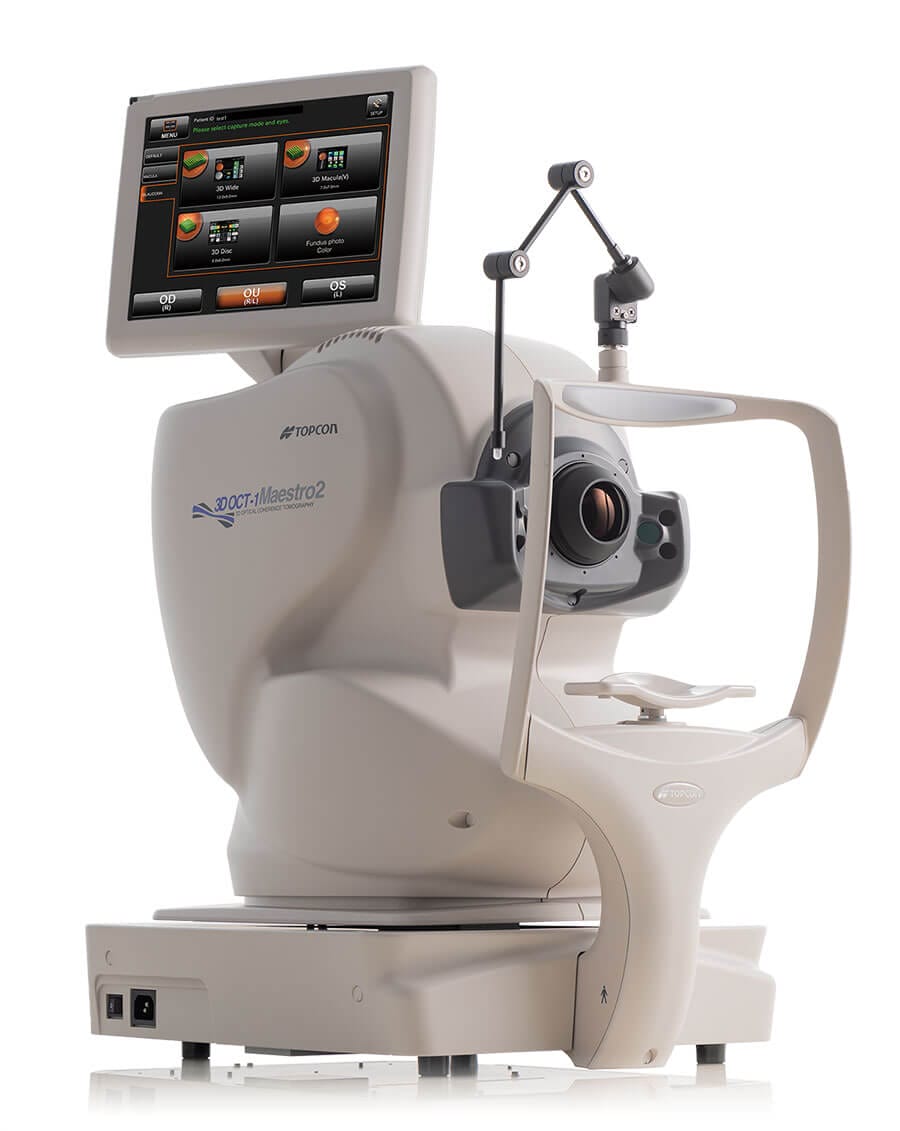


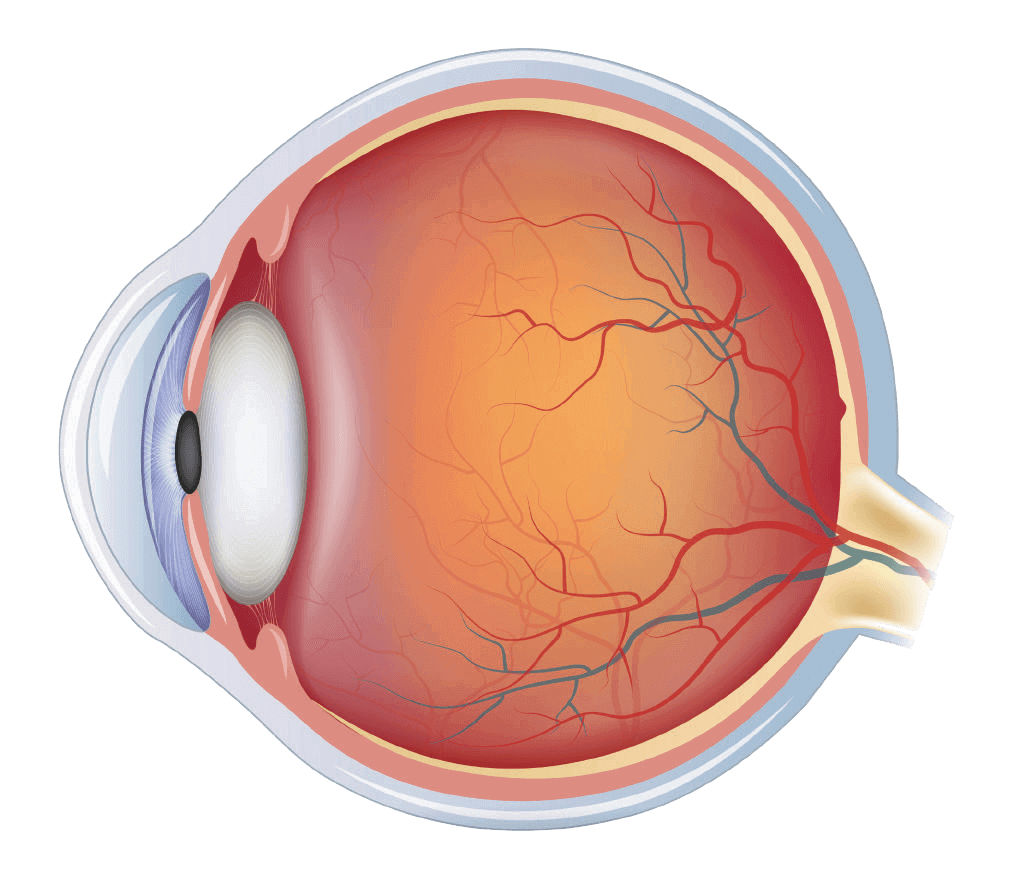

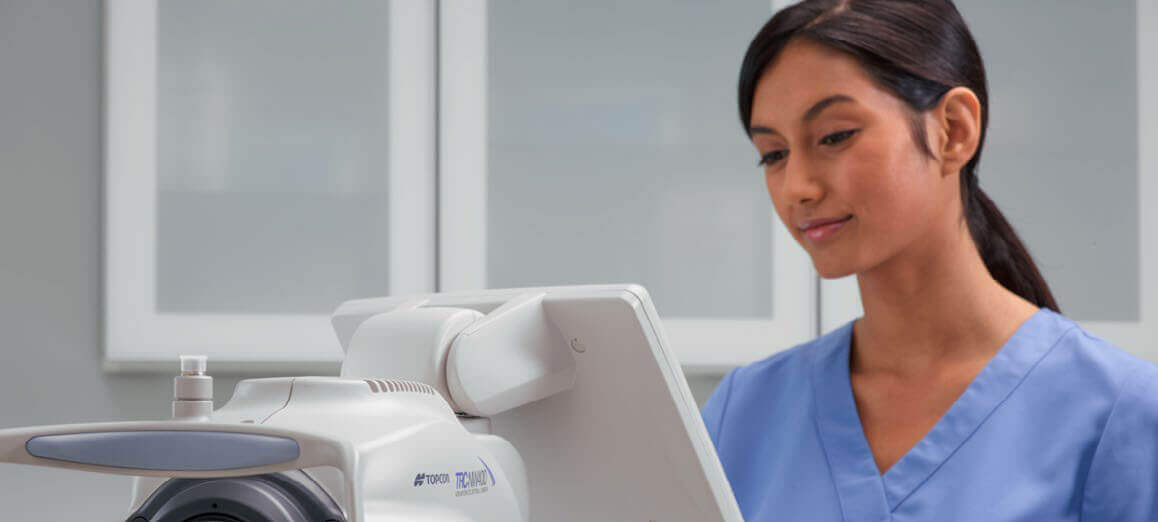
The OCT test gives highly detailed and accurate 3D imaging of the inner workings of your eye while being super comfortable for the patient. The OCT is:
Many retinal conditions can be diagnosed with OCT. It is generally easier to image lesions in the macula than in the mid and far periphery. Among the conditions OCT is most useful for diagnosing are:
It is possible to diagnose certain conditions using only an OCT (e.g. macular hole). For other disorders, particularly vascular disorders of the retina, additional tests may be necessary (such as fluorescein angiography or indocyanine green angiography).

OCT is becoming increasingly popular for evaluating retinal nerve fiber layer and ganglion cell layer thickness to diagnose optic nerve disorders:

Cataract surgery is one of the most common surgeries performed in the US, the OCT is an incredibly powerful tool in pre operative and post operative care for cataract patients.
Utilizing OCT imaging as a tool for pre and postoperative assessment can provide invaluable information for the surgical management of macular holes and retinal detachments. By using OCT, surgical outcomes can be visualized, confirming reattachment and normal contour. Post-surgical imaging can sometimes be challenging because of reduced OCT signal strength caused by ocular turbidity; however, images are adequate for subjective, if not quantitative, interpretation. In cases of poor ocular media, pre-surgical scanning can reveal pathologies that can complicate surgery, such as an undetected macular hole, choroidal neovascularization, edema, or vitreomacular traction syndrome. Due to the OCT's scanning beam technology, it is possible to image even through a small pupil or tiny peripheral opening in a dense cataract that otherwise would obstruct a thorough examination.

OCT has several characteristics that point to its future importance as biomedical imaging technology.
OCT images can have axial resolutions of one to fifteen micrometers, which is a significant increase over conventional ultrasound. Contrary to ultrasound, imaging can be performed directly through air, without direct contact with the tissue or a transducing medium.
Imaging can be performed in situ, without the need to excise a specimen. By doing so, it is possible to image structures where a biopsy would be dangerous or impossible. As a result, it also allows better coverage, reducing the sampling errors associated with excisional biopsy.
In contrast to conventional biopsy and histopathology, imaging can be performed in real time without the need to process a specimen. In this way, pathology can be monitored on screen and stored as high-resolution videos. By coupling real-time imaging with surgery, it is possible to provide surgical guidance based on real-time diagnosis.

